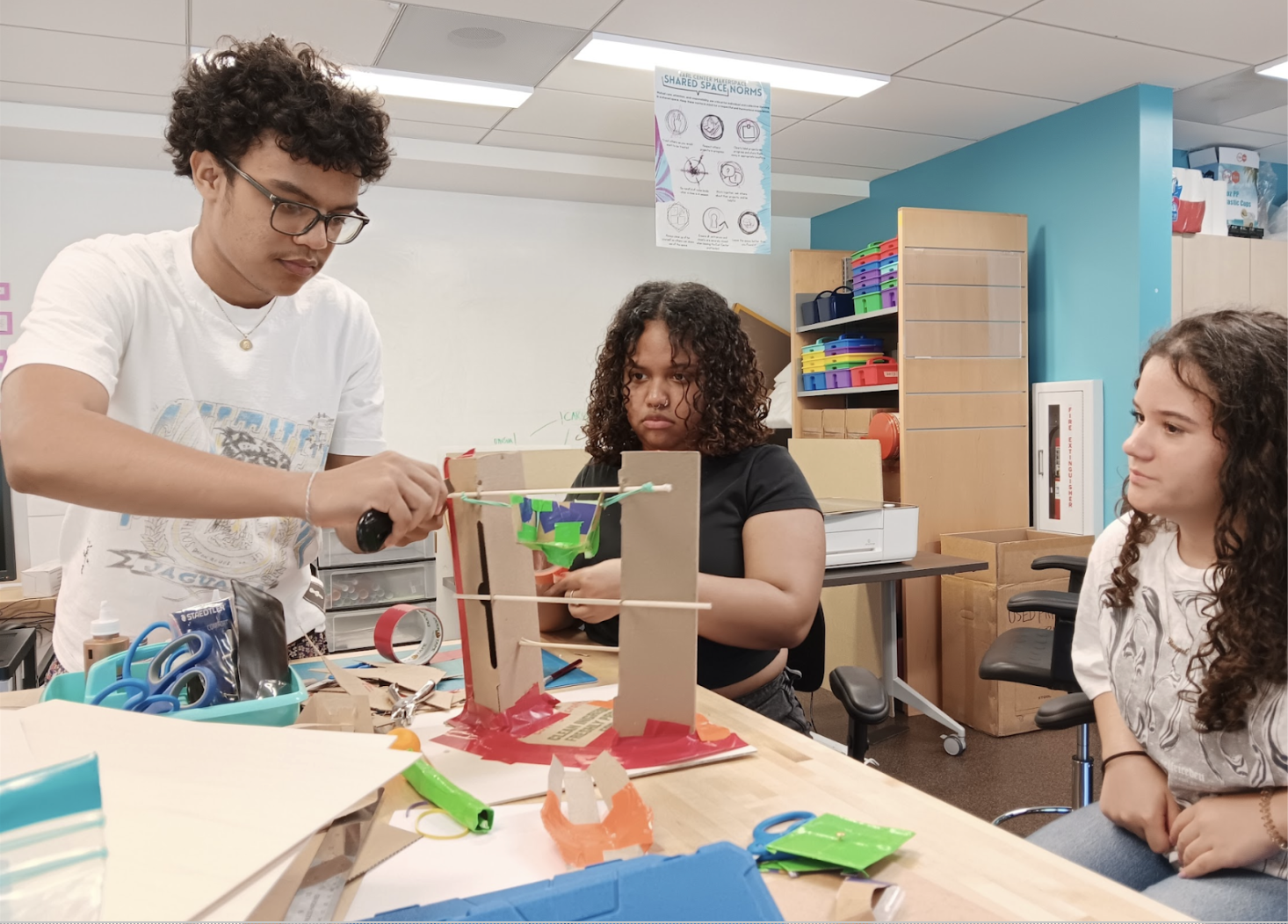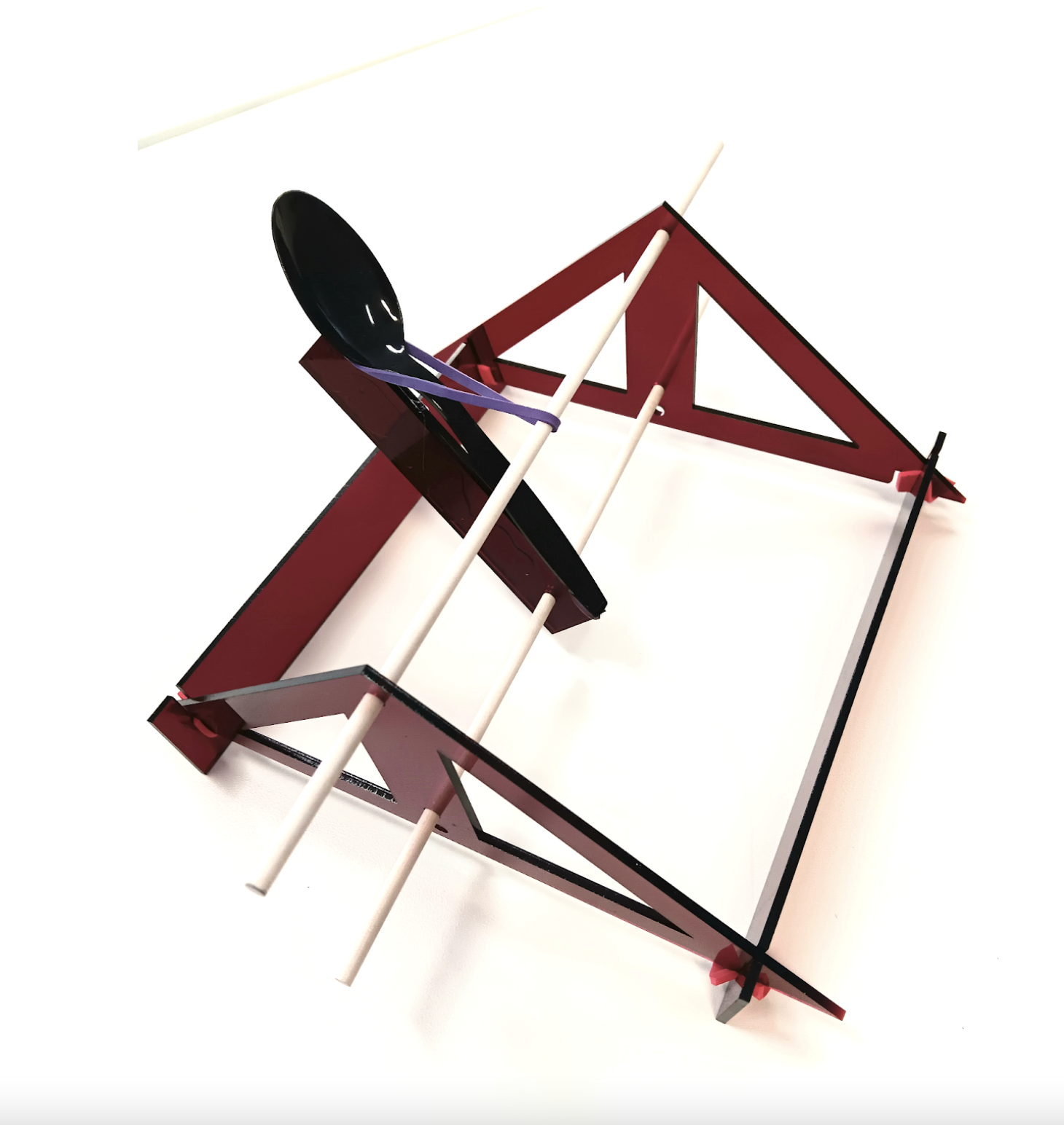By Temperance Wu and Lynn Brown
This summer, the Strategic Partnerships & Community Engagement (SPACE) Office of BU Wheelock invited the Earl Center to host three Boston Public Schools students through a Private Industry Council (PIC) initiative. A series of engagements introduced the students to design and making from a social justice perspective through six full-day workshops, introducing the concepts that underpin the world as designed–planned and built by people who have ideologies, agendas, and contexts.
Week 1: What do we mean by design and making?
The students explored designers’ intentions by dismantling office chairs, analyzing a BPS student class schedule, and reviewing an online MBTA bus schedule. They found that chair designers focused on material efficiency, varied wheel functions, and multipurpose tools. The BPS schedule was confusing and lacked key information, while the MBTA schedule offered interactive features like timetables, a live-updating map, and a user-friendly interface. They also read and discussed different definitions of “making” and “makerspaces.”
Week 2: Traditional and pre-digital making
Students read a chapter from Braiding Sweetgrass by Robin Wall Kimmerer on a Potawatomi basketmaker’s process, then designed and constructed a device by hand, without electronic tools or internet. They chose to build a catapult using different materials: cardboard, cardstock, and balsa wood. After an hour, they found it challenging: the balsa wood was tough to cut, the cardboard lacked strength, and the cardstock struggled with tension. Allowed to combine materials, they had more success. They learned about the limitations and affordances of different materials, with one student noting, “materials teach us about themselves,” a lesson that resonated throughout the program.


Week 3: Making in the post-digital world
Professor Dr. Gregory Benoit of the Earl Center discussed the design of social media identities with the students, who analyzed math memes for their underlying messages. The students then rebuilt their catapult using digital tools, researching methods online, sketching in 2D, and drafting designs in Inkscape. They used a laser cutter to create their designs from acrylic but found the connections too tight, learning the importance of iteration in refining their work. Later, Dr. Michael Chang, an AI in Education expert, introduced them to ChatGPT, sparking discussions about how AI oversimplifies cultural stories and what it means to truly create and be human. The students concluded that AI’s outputs don’t always reflect real-life experiences.
Week 4: Pushing back against patriarchal and capitalist models of making
We encouraged students to challenge dominant ideas of making and consider why forms of labor like repairing, caretaking, and teaching—often associated with femininity and non-Western practices—are undervalued. Ali Blake, a doctoral candidate from BC, discussed clothing and mending through a queer and trans lens, prompting students to explore how fashion in marginalized cultures conveys messages and ideologies. They then experimented with textiles without focusing on a final product, embracing the playfulness of making. In the afternoon, Professor Jeffrey Nowlin led a sculpture workshop using repurposed cardboard. Students chose messages that resonated with them and created a large shield adorned with cut-out fashion brand logos like Versace, Gucci, and Rolex, representing resistance against the luxury fashion industry.


Week 5 and 6: Bringing it all together
In the final two workshop days, students reflected on their experiences and developed three personal design principles, such as the importance of collaboration, careful planning, and creating unique designs. They then made something aligned with these principles: a beaded curtain requiring teamwork, a meticulously planned college merch shirt for a precise look, and an original garment inspired by the Joker, capturing the character’s essence in a unique style.
The students marked the end of each workshop day with one word that captured their feelings about the day. They found their time with the Earl Center to be: demanding, eye-opening, engaging, comfortable, enticing and cool.
As for us, we had a great time and look forward to seeing them when they come back to visit!
